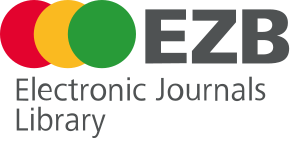Impact of self-medication on chronic daily headache
DOI:
https://doi.org/10.56294/shp2025218Keywords:
Analgesic, MOH, Medication, Migraine, Secundary HeadacheAbstract
Introduction: Chronic daily headache is a frequent condition in the general population. A high percentage of patients have an abusive consumption of analgesics that makes the headache worse and may also carry the risk of multiple pathologies produced by these drugs. It is defined as the presence of headache continuously or almost continuously for at least 15 days a month, for a period of at least three months.
Material and methods: This work was carried out through a detailed search of medical articles and clinical trials published between 2010 and 2023.
Results: The precise pathophysiological mechanisms that lead to the development of headache due to analgesic abuse are largely unknown, however, multiple factors may be involved, including genetic predisposition, sensitization within the trigeminal system, abnormal processing of cortical pain and decreased anti-nociceptive activity of the supraspinal structures.
Conclusion: NSAIDs are the first step in the pharmacological treatment of headaches and chronic use of these drugs can cause a paradoxical worsening of the headache and the development of analgesic-induced headache, which is currently the most prevalent secondary headache worldwide.
References
Massey T, Robertson N. Medication-overuse headache: causes, consequences and management. J Neurol. 2021;268(9):3505–7. doi:10.1007/s00415-021-10720-5
Wakerley R. Medication-overuse headache: painkillers are not always the answer. Br J Gen Pract. 2020;70(691):58–9. doi:10.3399/bjgp20X707777
Martínez J. El paciente con cefalea por uso excesivo de medicamentos en urgencias. Acta Neurol Colomb. 2020;36(4):29–32. doi:10.22379/24224022314
Moskatel L, Schuster N. Medication-overuse headache: results from a pain medicine clinic cohort. Ann Head Med. 2022;6(3). doi:10.30756/ahmj.2021.06.03
Martínez JD. Patient with medication-overuse headache in the emergency department. Acta Neurol Colomb. 2020;36(4 Suppl 1). Disponible en: https://www.actaneurologica.com/index.php/anc/article/view/1028/359
Shagbazyan A, Kovalchuk N, Tabeeva G. Role of educational programs in management of patients with medication-overuse headache. Neurol Neuropsychiatry Psychosom. 2021;13(3):27–33. doi:10.14412/2074-2711-2021-3-27-33
Carlsen L, Munksgaard S, Nielsen M, Engelstoft I, Westergaard M, Bendtsen L, et al. Comparison of 3 treatment strategies for medication-overuse headache: a randomized clinical trial. JAMA Neurol. 2020;77(9):1069–78. doi:10.1001/jamaneurol.2020.1179
Diener H, Kropp P, Dresler T, Evers S, Förderreuther S, Gaul C, et al. Management of medication overuse (MO) and medication-overuse headache (MOH): S1 guideline. Neurol Res Pract. 2022;4(1):1–14. doi:10.1186/s42466-022-00200-0
Goadsby PJ, Lipton RB, Ferrari MD. Migraine: current understanding and treatment. N Engl J Med. 2002;346(4):257–70.
Bonnet C, Hao J, Osorio N, et al. La activación desadaptativa de los canales Nav1.9 por óxido nítrico provoca dolor de cabeza por uso excesivo de medicamentos inducido por triptanos. Nat Commun. 2019;10:4253. doi:10.1038/s41467-019-12197-3
Published
Issue
Section
License
Copyright (c) 2025 Florencia Magalí Ferrari, Roberto Rosler (Author)

This work is licensed under a Creative Commons Attribution 4.0 International License.
The article is distributed under the Creative Commons Attribution 4.0 License. Unless otherwise stated, associated published material is distributed under the same licence.






